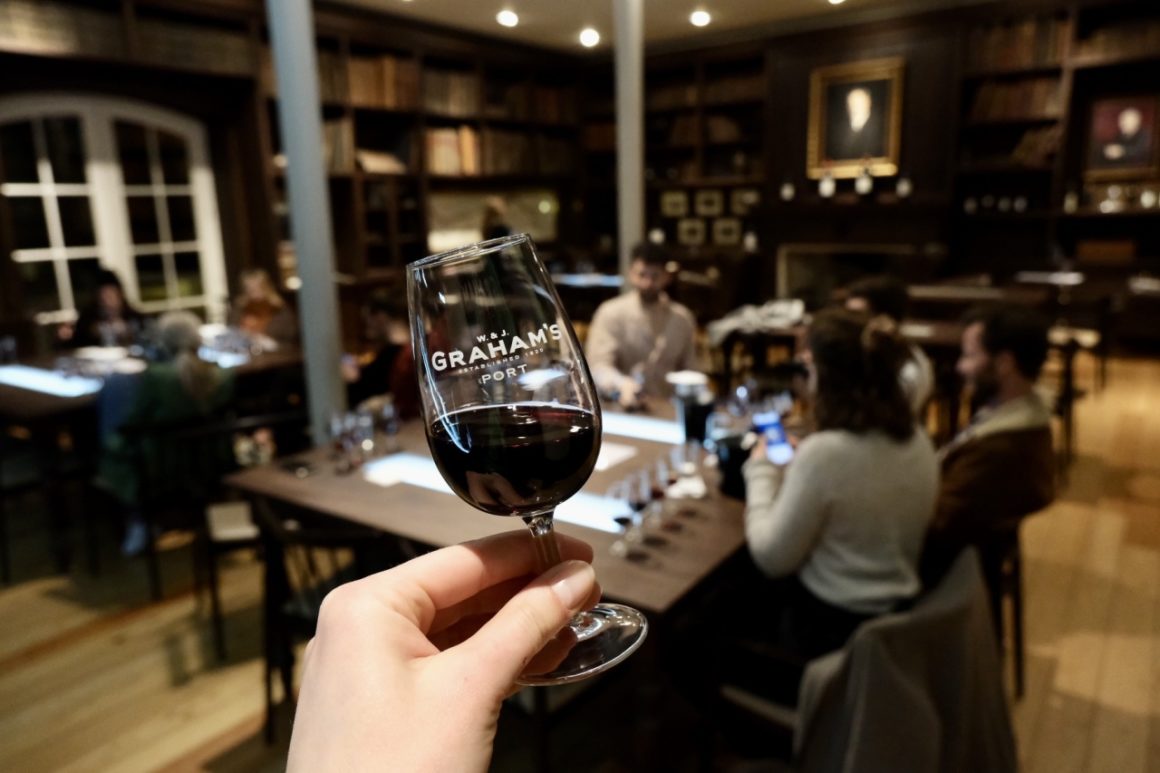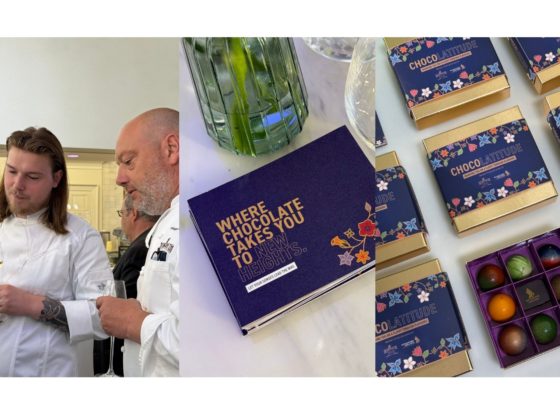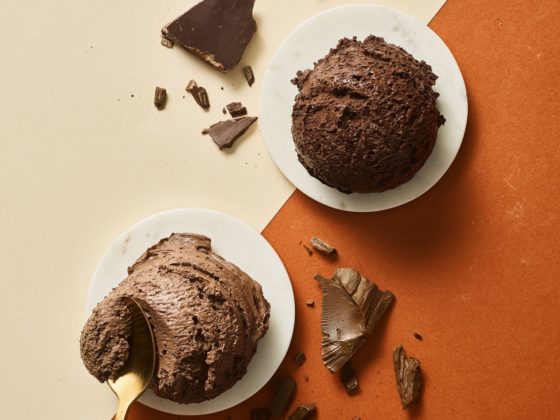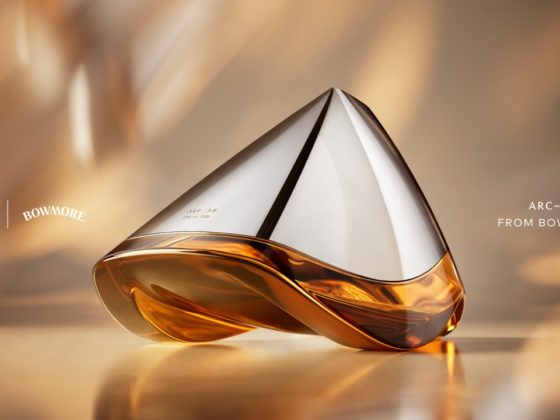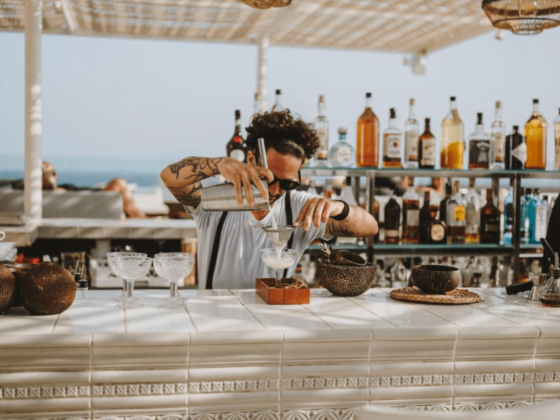Porto, a culinary city on the Douro river and the place to be for a tasty glass of port. We travelled to this vibrant city and paid a visit to the pioneer in making port wines. Graham’s port, a tale of two families through three centuries, is now at the forefront of innovation in winemaking techniques. During our visit, we enjoyed an extensive tour of the Graham’s Lodge, an exclusive dinner among the port barrels and, of course, the port itself during a tasting in the Vintage Room. A vossa saúde!
A LITTLE BIT OF HISTORY
During our tour of the Lodge’s wine cellars, we were given a word about the family history and their vineyards in the Douro valley. Originally, W & J Graham’s was founded by William and John Graham as a textile business which they used to purchase twenty-seven barrels of port wine in 1820 in payment of a debt. The two brothers then decided to devote their energies to making the finest port wines from the Douro Valley and so the Graham’s Port House was born.
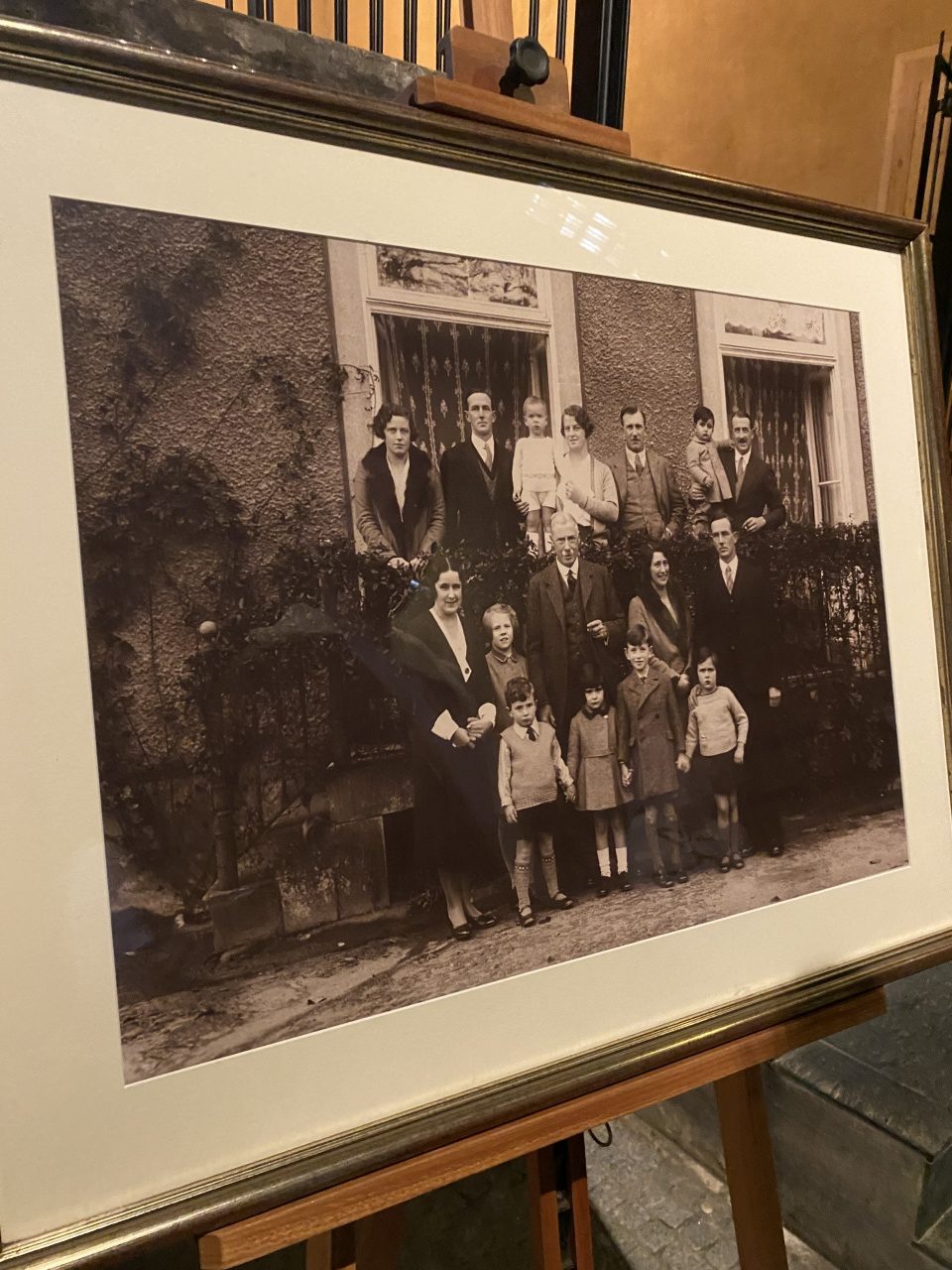
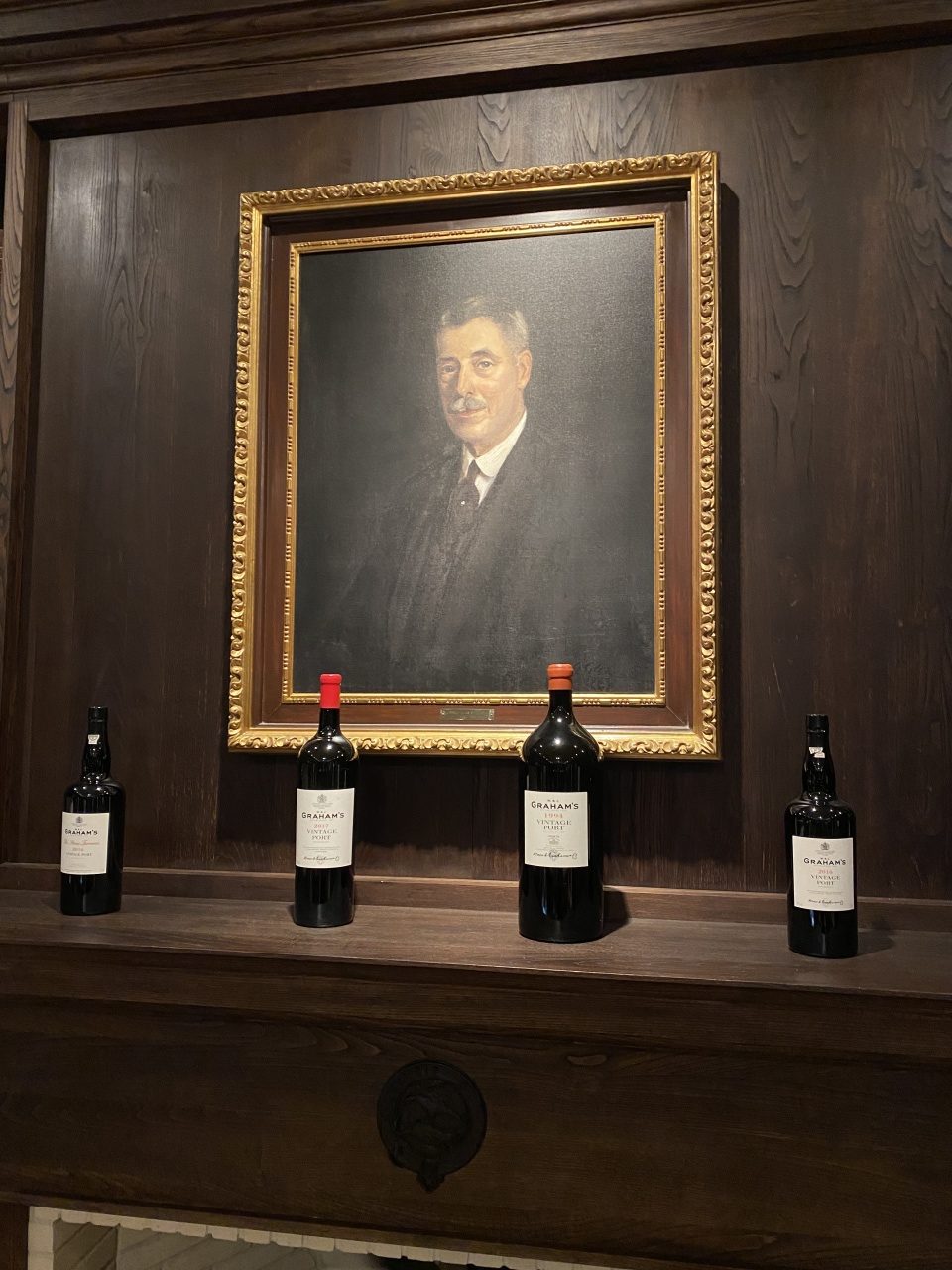
Today, five cousins of the Symington family share responsibility for every aspect of the business and personally make Graham’s wines. The family has been at home in the Douro Valley for more than 130 years and has had links with W & J Graham’s since 1882, when the young Scottish businessman, Andrew James Symington, came to Porto to work for the company. Almost a hundred years after their ancestor Andrew James Symington left Graham’s to establish himself as its own port producer, the family’s relationship with this House of Ports came full circle. Graham’s first vintage under the ownership of the Symington family was highly favourable, the Graham’s 1970 Vintage Port was declared and considered by many to be one of the greatest wines of that century.

THE MAKING OF GRAHAM’S PORT
For five generations now, the Symington family has combined their passion for producing excellent ports and wines with a strong commitment to the land and people of the region. And you can taste that too! Graham’s owns a significant amount of vineyards in the Douro region where high quality grapes are produced, which form the cornerstone of Graham’s finest wines. Since 1890 Graham’s has owned the beautiful Quinta dos Malvedos, vineyards with an exceptional southern terroir.
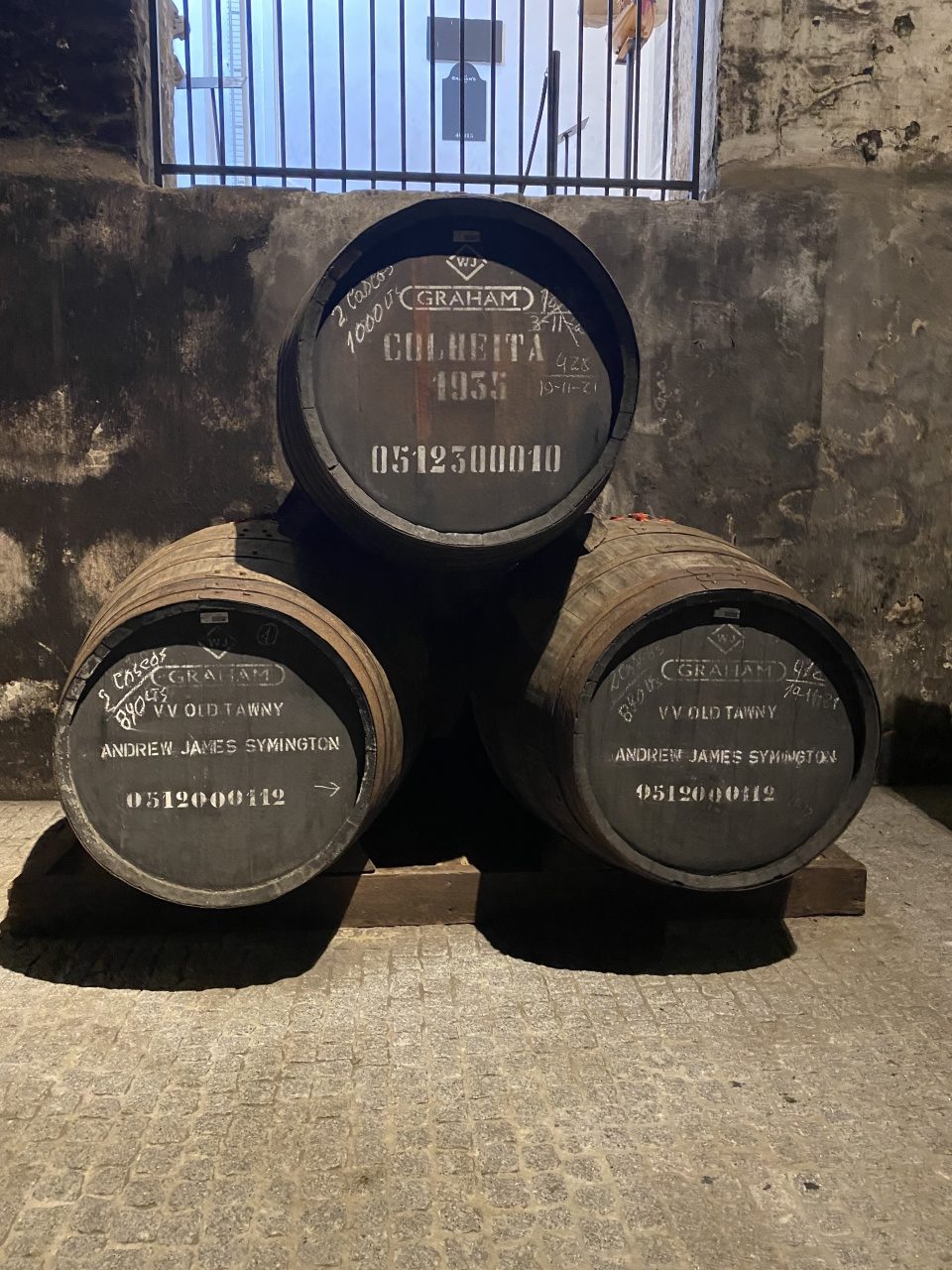
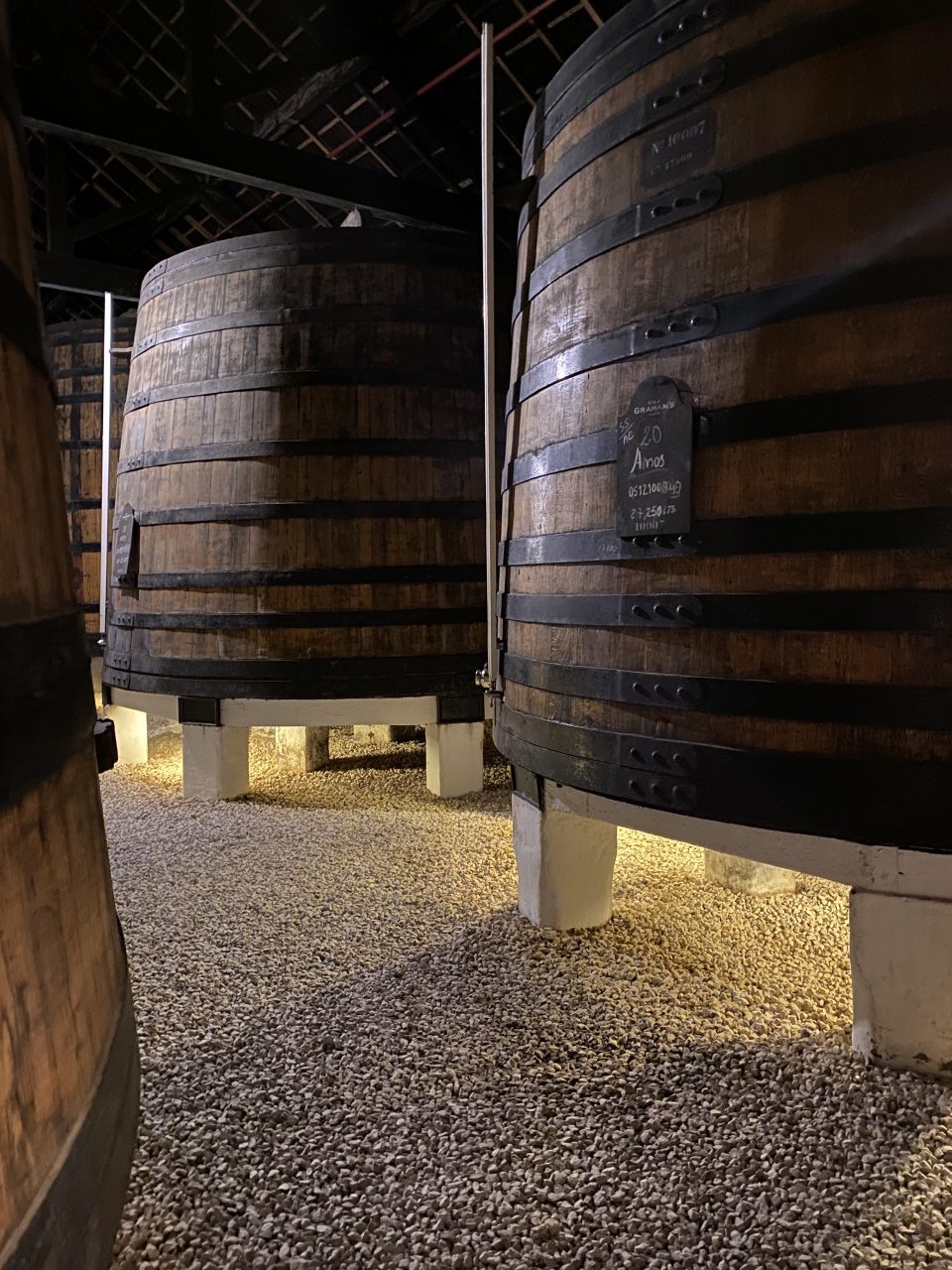
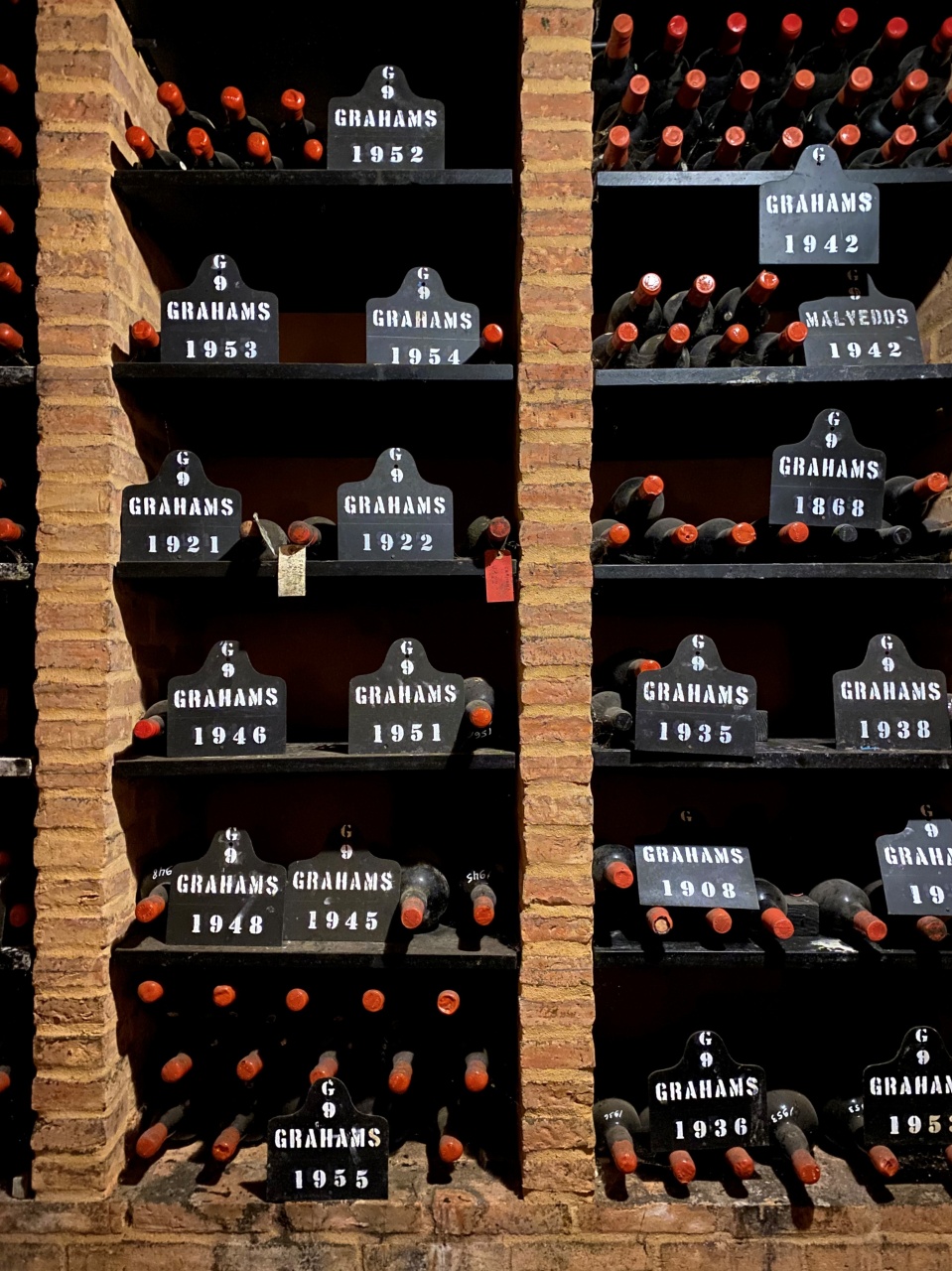
In the same year, the company built the beautiful Lodge in Vila Nova de Gaia to store and age its wines in the best possible conditions. Vila Nova de Gaia has a moderate maritime climate, ideal for ageing Port wine. The strong maritime influence (moderate winters and cool moist summers) gives Graham’s Port its elegance and finesse.
Today, all Graham Port wines come to the1890 Lodge, where they are aged and cared for by a dedicated team. The art of tubbing is essential to making good port, so Graham’s uniquely retains its own dedicated team of tubbers. In addition, the cellar master personally guarantees the ideal conditions for ageing in the Graham’s Lodge. Currently, some 7 million ports are stored including the single harvest port from 1882. This is the oldest port of which they still have 840 litres available. The price tag? About 12,500 euros per bottle.
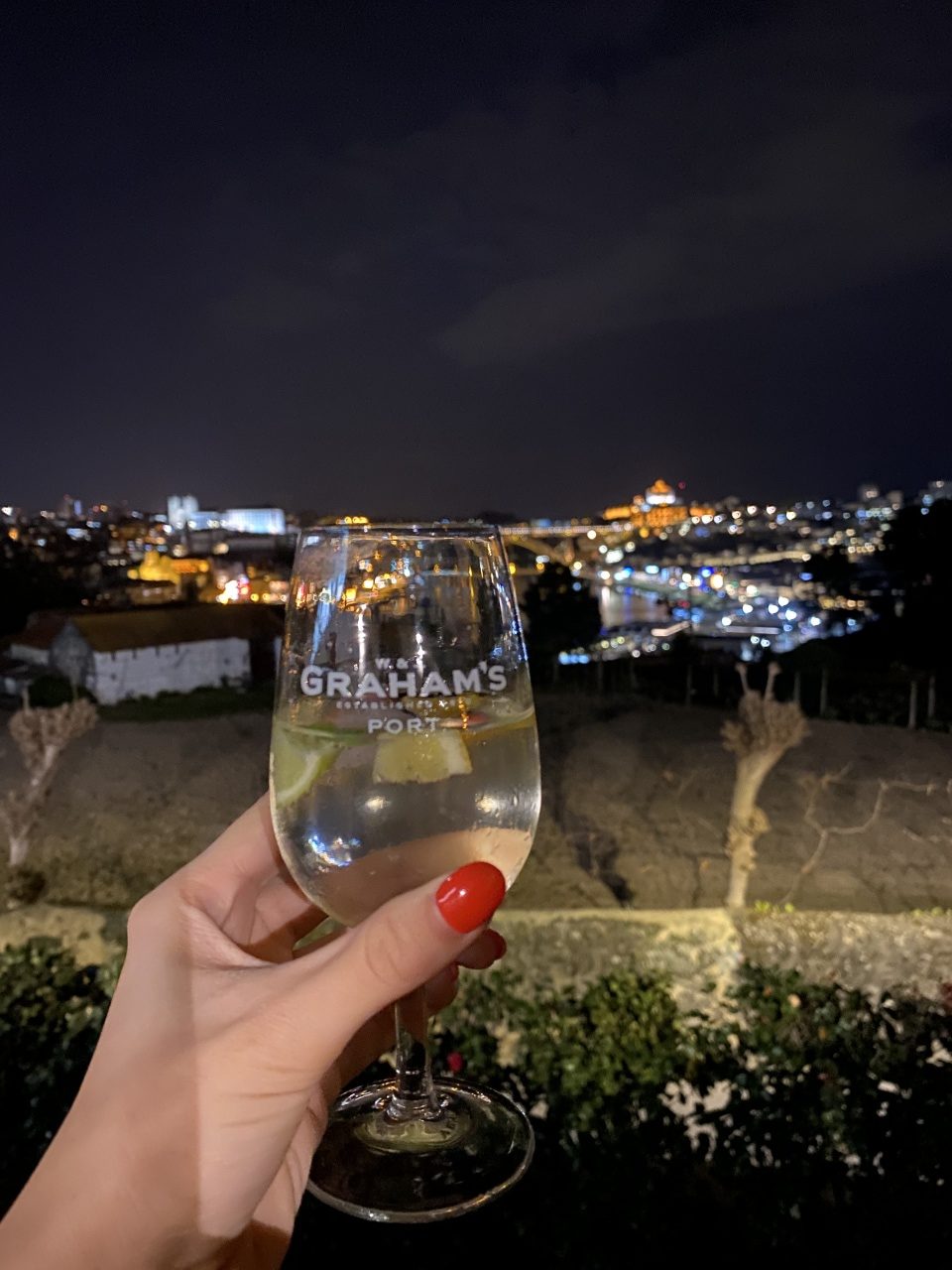

EXCLUSIVE DINER BETWEEN THE BARRELS
After the tour, we were invited to the terrace overlooking the Douro River for an aperitif with tonic and the Blend Nº5 White port, then to take our seats at the table among the old handmade port barrels. We enjoyed a menu prepared by the gastronomic restaurant Vinum adjacent to the Lodge. The dishes were paired with some gems of Graham’s wines, but also the organic olive oil Quinta do Ataíde Azeite Virgem Extra was present to dip the fresh rolls in. The appetiser made our mouths water. A delightful toast with Azorean tuna and Trás-os-Montes aged beef ham paired with the Quinta do Ataíde Douro 2016, who could resist that? We certainly cannot. To end the evening, we were surprised with a delicious light apple tartlet with cinnamon and fresh vanilla ice cream, paired with the Graham’s Fine Ruby Port. A heavenly, deep-coloured port with a youthful freshness and aromas of lush fruit.

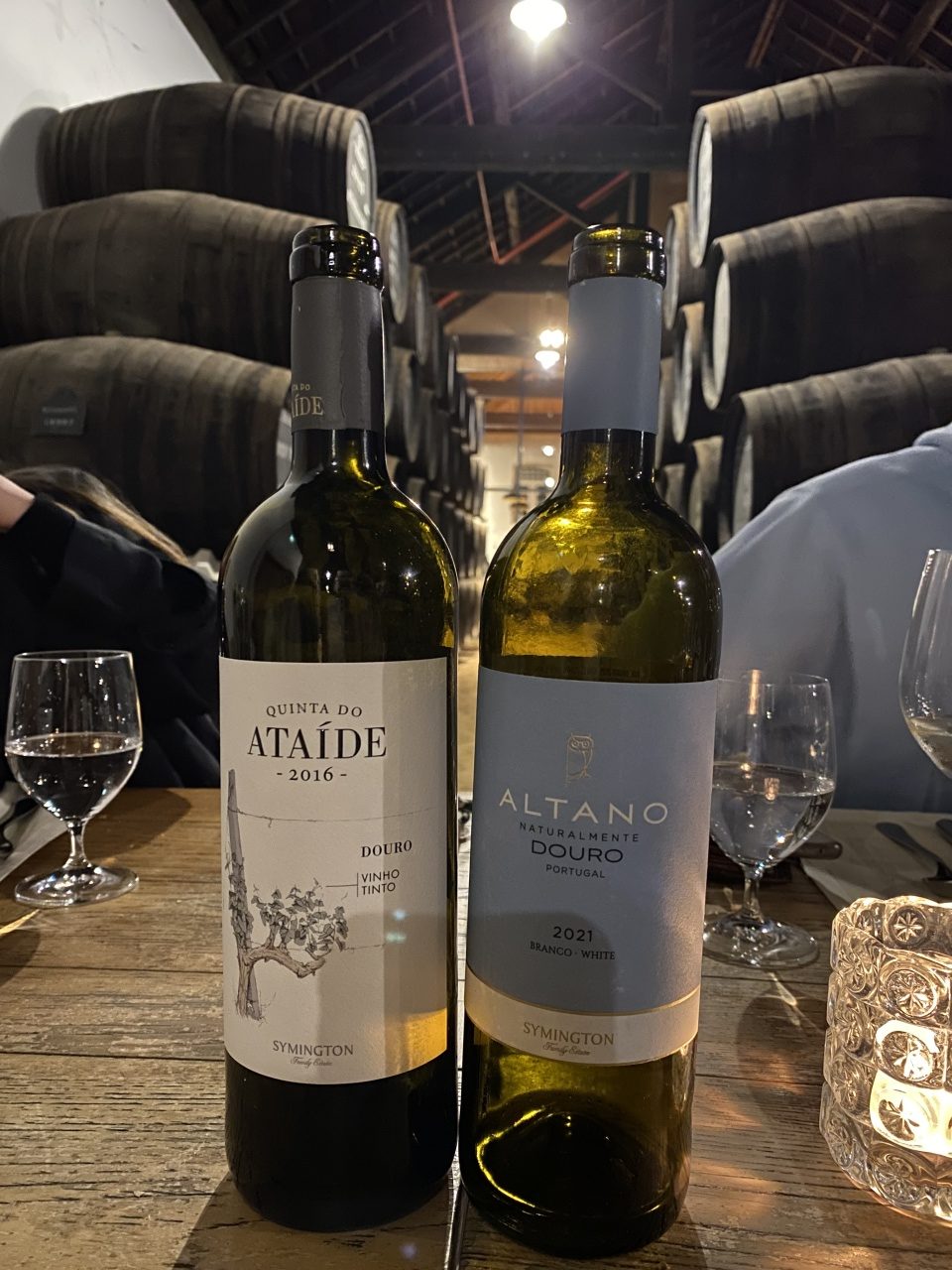
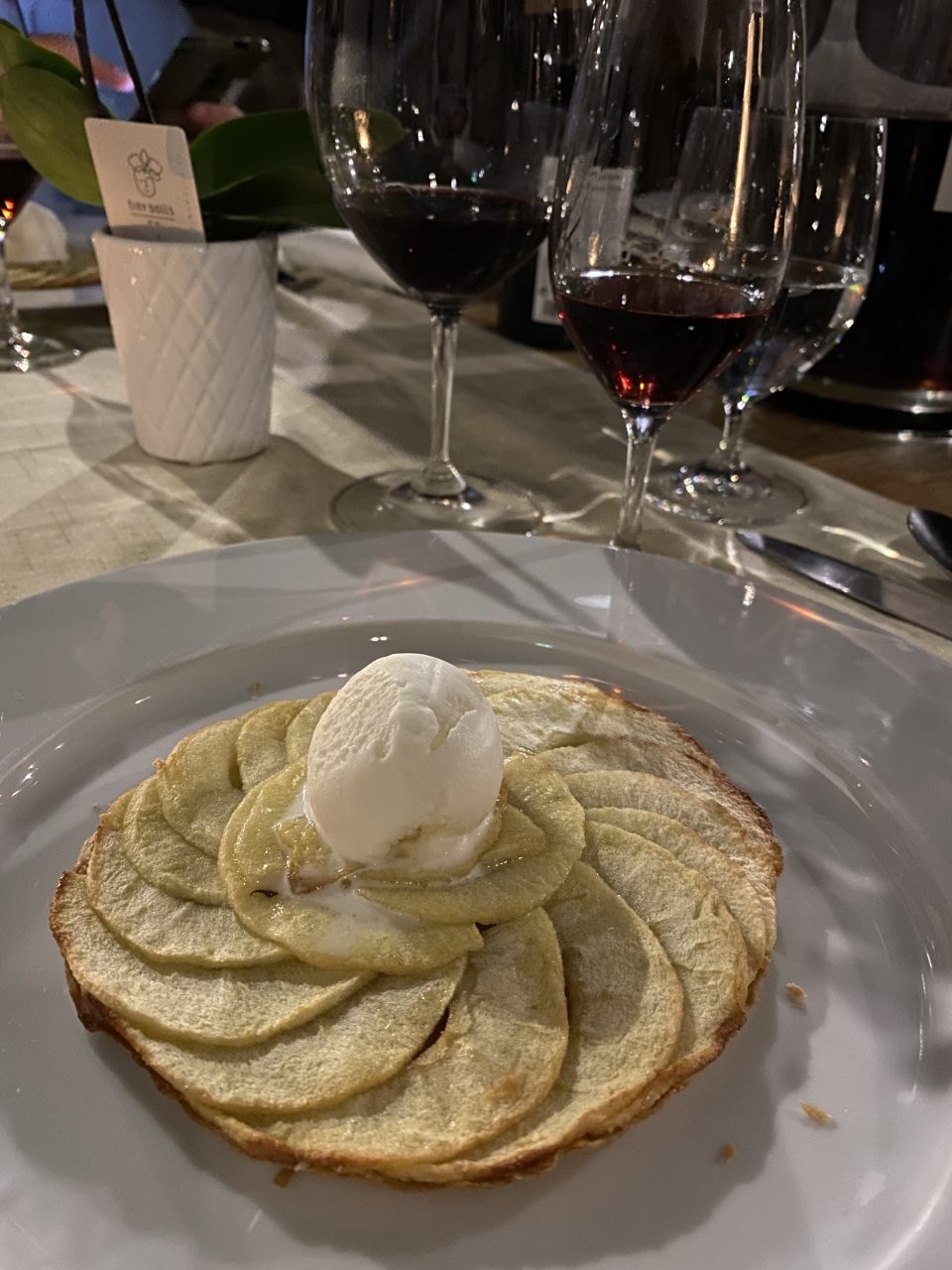
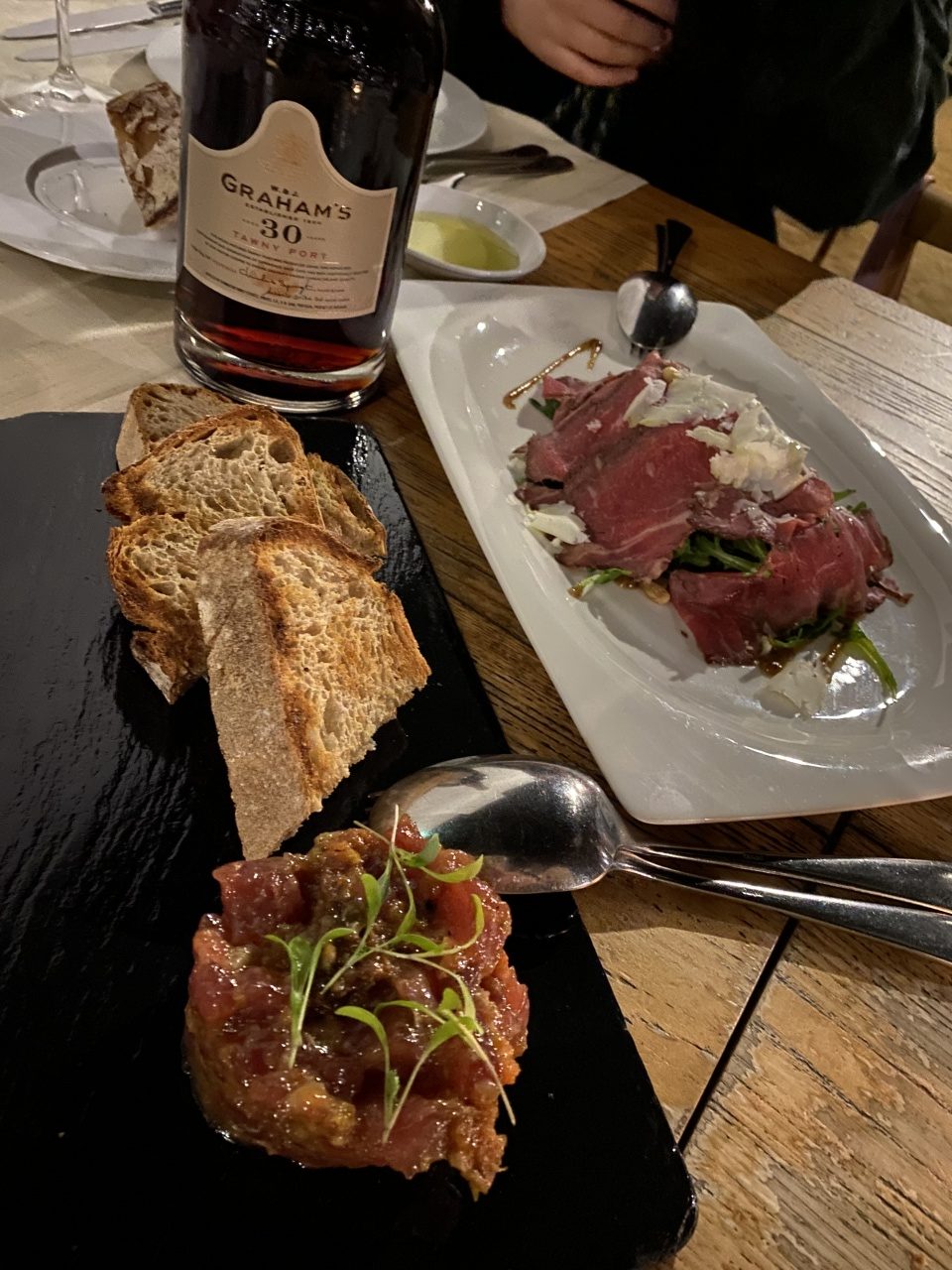
TASTING IN THE VINTAGE ROOM
It is sometimes said that the more you taste, the more you discover, the greater the pleasure. In other words tasting is enjoying. And we did, because the next day we returned to the Lodge for a unique tasting in the Vintage Room. By the way, did you know that the character of each glass of port is largely determined by the way it has been aged? The different styles can be divided into those that are aged in bottle and those that are aged in oak barrels. Port is also always aged in roasted barrels, unlike dry wine, which uses new wood.
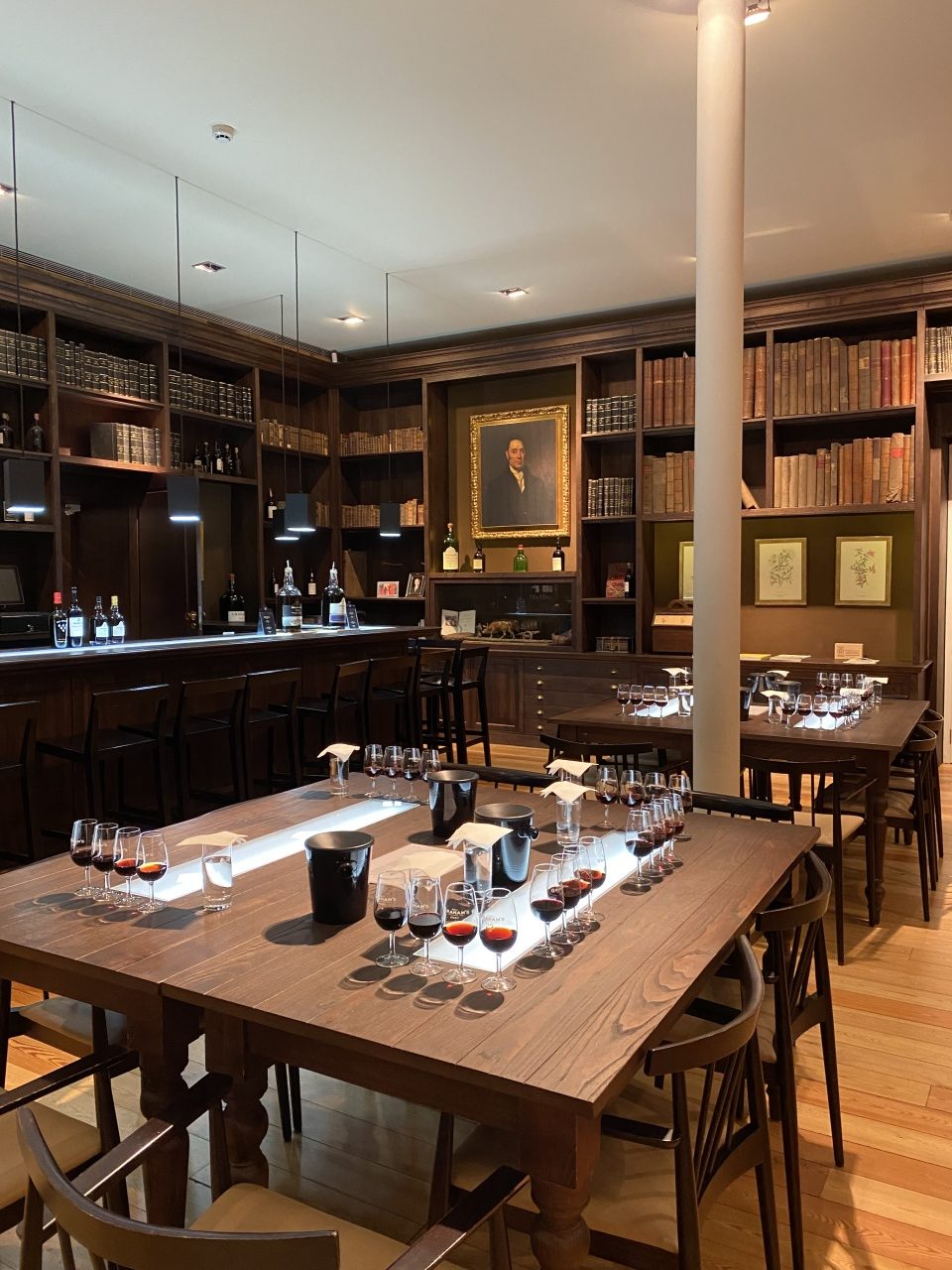
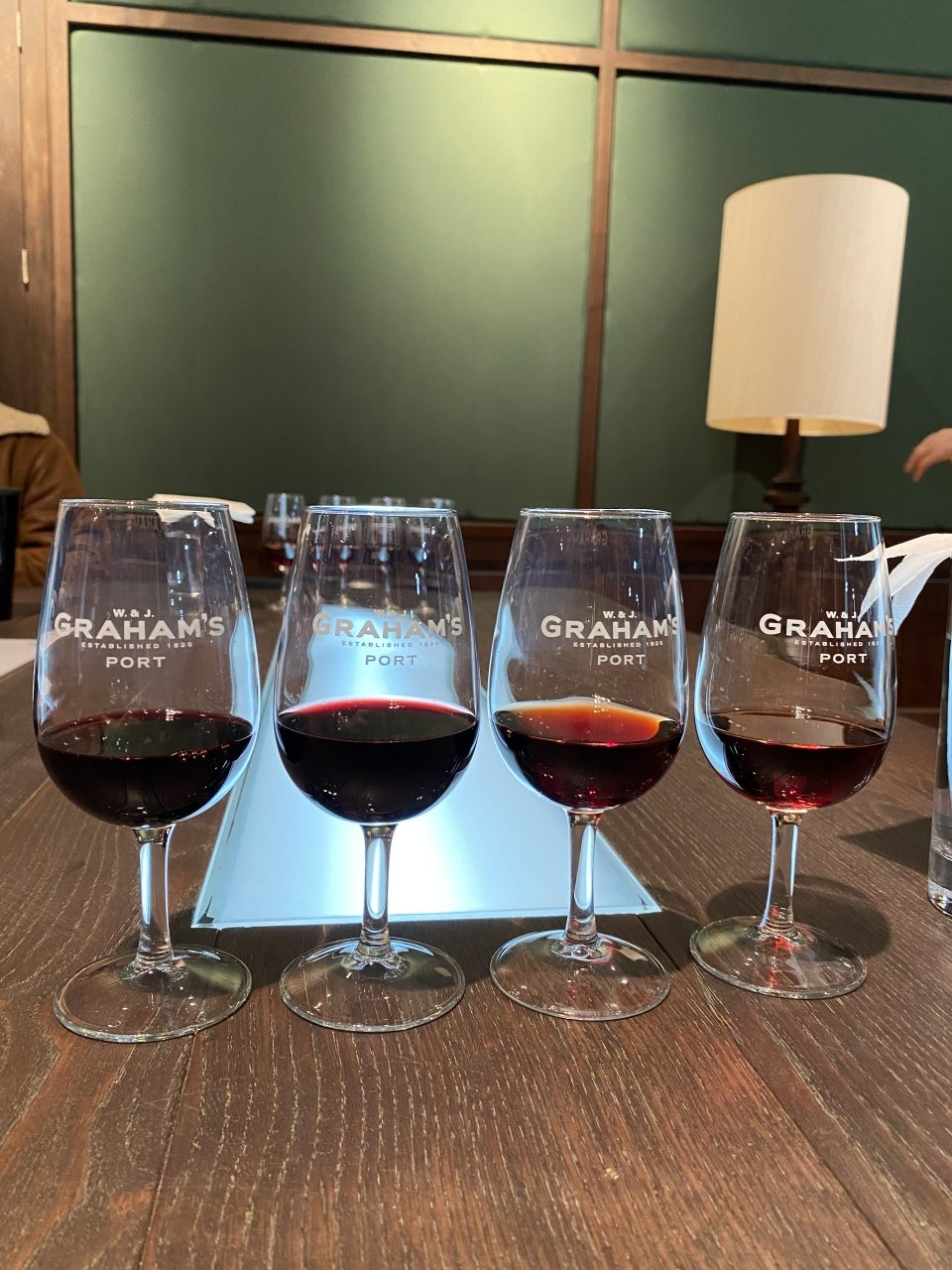
We started by tasting the Six Grapes Reserve Port. The naming of this port originated with the Graham’s winemakers who rated the wine from one to six by marking each barrel of port with grape symbols. The symbol of six grapes stood for complexity, structure and balance. Six Grapes is aged 2 years in toasted barrels before being bottled. It is a youthful, bright and complex reserve port. Known for its finesse, Six Grapes has a full body and is characterised by fresh aromas of blackberries, liquorice and cassis. Its abundant black fruit flavours on the palate make it perfect for pairing with pure chocolate.
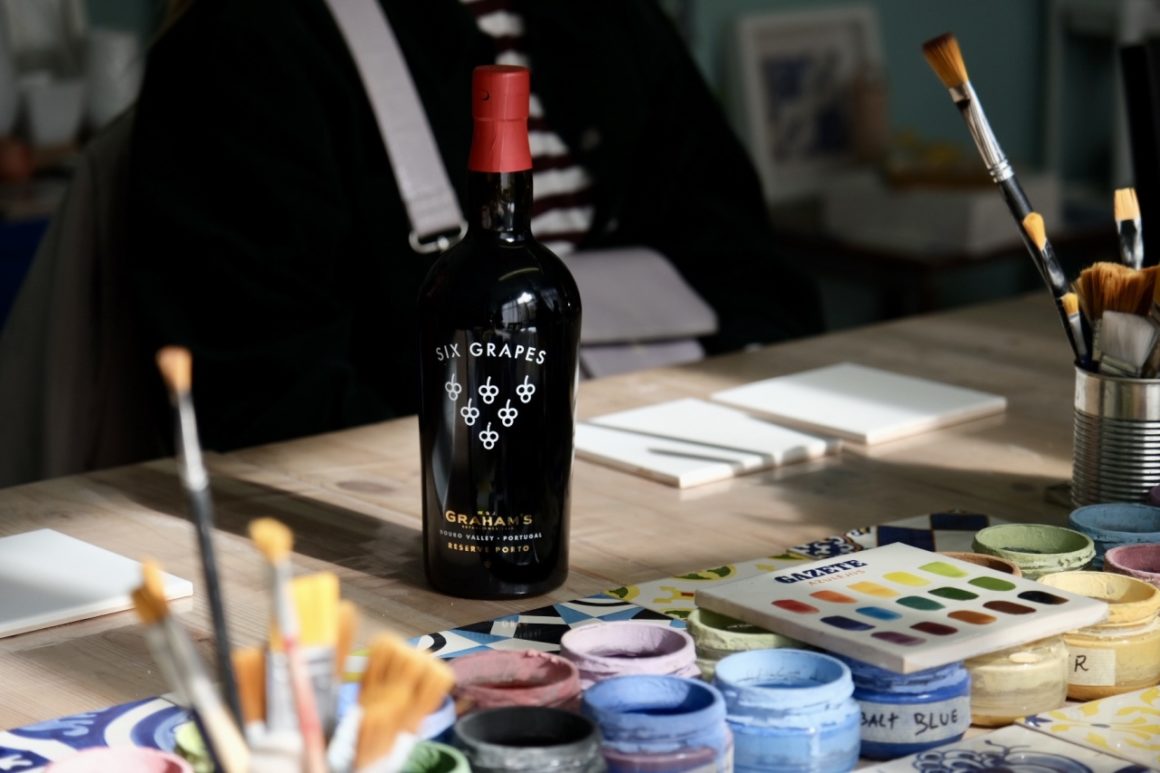
The slightly spicy Graham’s Vintage Port 2000 was up next. This excellent, full-bodied and rich Vintage displays many of Graham’s signature aromas, including ripe plums and Cistus ladanifer. All Vintage Ports spend approximately 18 months in wooden casks before being bottled. Once bottled, they are stored horizontally in the cellar so that the cork remains moist. This prevents the ports from coming into contact with the air, so the colour of the wine changes only slowly. Despite its youthful age, it has developed a wonderful smoothness on the palate.

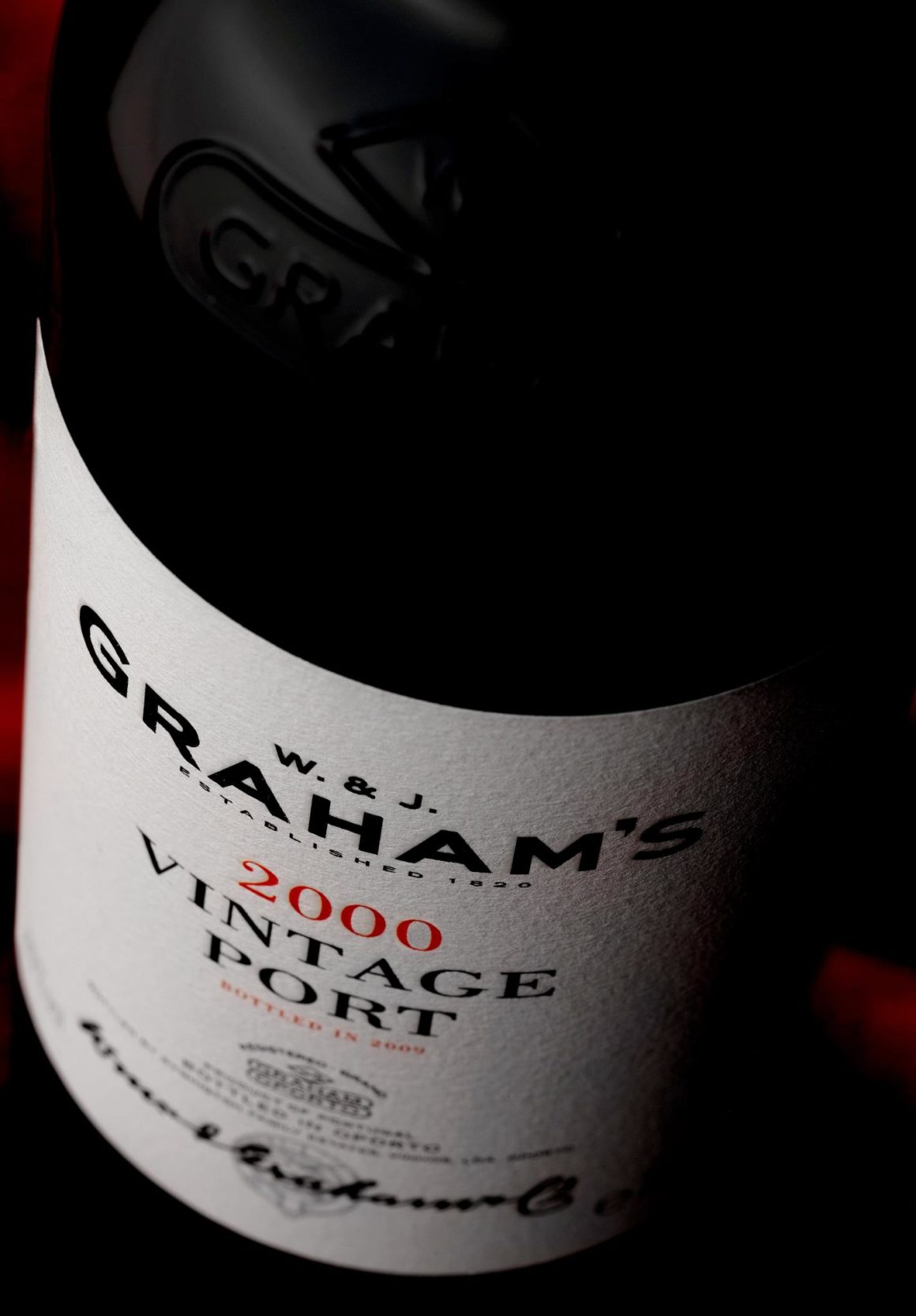
The last two ports to be enjoyed were Graham’s 10 Years Old Tawny Port and Graham’s 20 Years Old Tawny Port. Tawny Ports, unlike Vintage Ports, are matured in contact with oxygen which penetrates the oak of the barrels. This changes the colour from the original deep crimson of the young wine to beautiful shades of taupe. Depending on the length of barrel ageing, the colour of Aged Tawny Port ranges from the cedar red of a 10-year-old wine to thedeep amber of a 40-year-old wine.
These ports are a perfect match for creamy or fruity desserts, such as apple pie, almond cake and crème brulée. After a decade of care and slow seasoned oak maturation, Graham’s 10 Year Old Tawny is a wonderful example of the complex nutty and ripe fruit flavours of typical Tawny Port combined with hints of honey and figs. This port has a deep tawny and polished copper colour and on the palate rich ripe fruit flavours with a lush and long finish. Aged in toasted oak casks for an average of twenty years, most wine lovers consider the 20 Year Old to be the perfect age and balance of maturity for a truly great port. This port has an outstanding bouquet of nutty characteristics and delicious ripe fruit with hints of orange peel, beautifully softened by wood ageing. In the mouth, rich and smooth, perfectly balanced with a long and elegant finish.
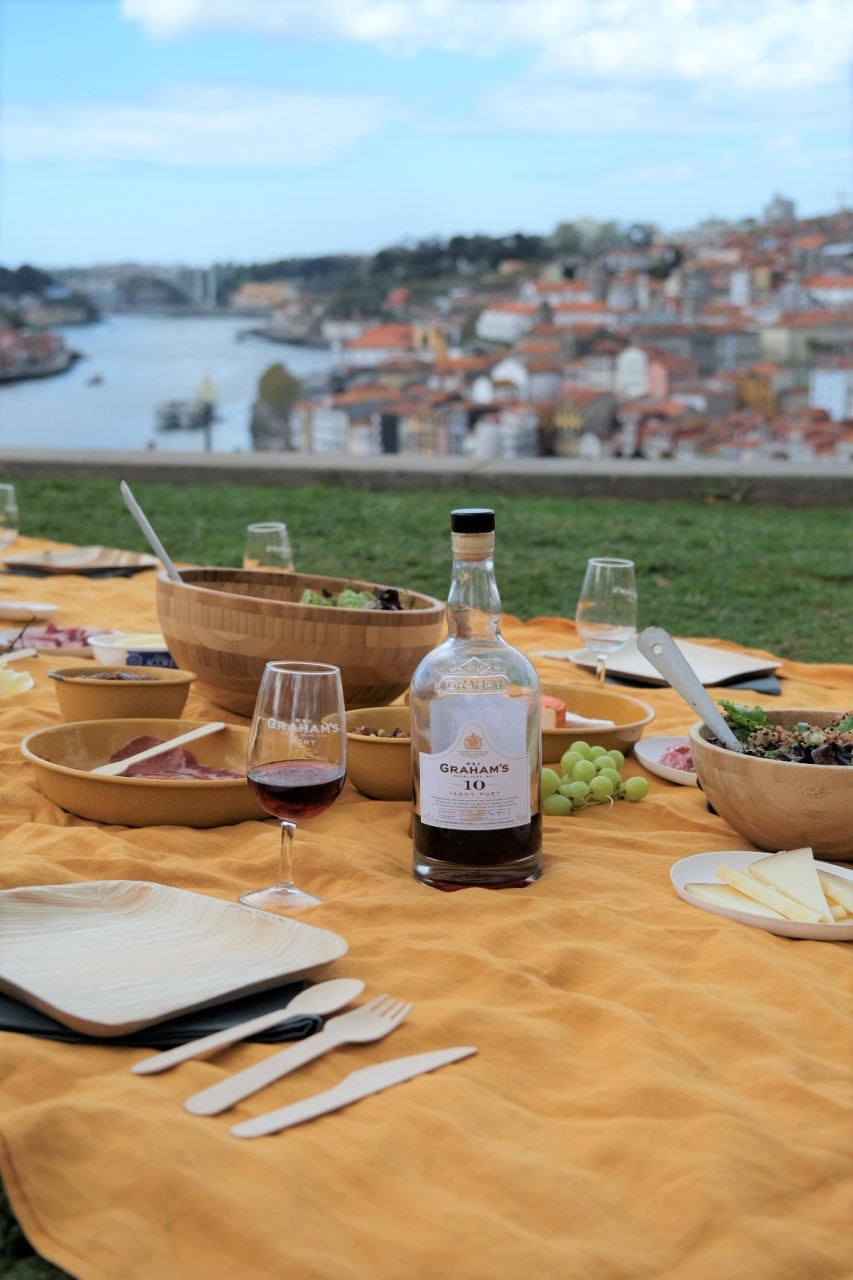

It was difficult for us to choose a favourite, but if we really had to choose, we would go for the Graham’s 20 Years Old Tawny Port, although the spiciness of the Graham’s Vintage Port 2000 also surprised us. Thankfully, we don’t have to choose, but do let us know if you have a favourite! We’ll be back soon with more juicy articles. 😉

